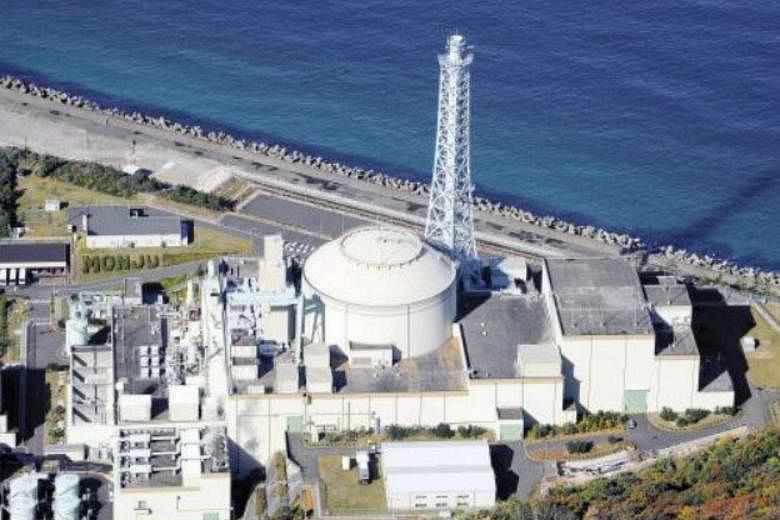TOKYO (REUTERS) - The Japanese nuclear regulator recommended on Wednesday (Nov 4) that the government find an alternative entity to operate the troubled Monju prototype fast-breeder reactor following a series of problems with the current operator.
The move comes as a huge setback for the Japanese nuclear industry and government as the roughly 1 trillion yen (S$11.5billion) project is a cornerstone of resource-poor Japan's plan eventually to become self-sufficient in energy.
The Nuclear Regulation Authority's (NRA) head Shunichi Tanaka said on Wednesday that state-run Japan Atomic Energy Agency is not to be relied upon to operate Monju, adding that he would like the government to reach a conclusion in about six months and that there's a need to reconsider the Monju project.
The NRA is set to formally adopt the recommendation to the science minister in charge of Monju next week.
Fast-breeder reactors have been beset by technical difficulties and many countries have abandoned the costly programmes to develop them.
In August, Japan restarted a nuclear reactor for the first time under new safety standards put in place since the Fukushima disaster in 2011, as Prime Minister Shinzo Abe sought to reassure a nervous public that the industry was now safe.
The Japanese government considered suspending development of Monju, then-Science Minister Yoshiaki Takaki said in 2011, months after the Fukushima disaster.
Monju, located in Fukui Prefecture, 400km west of Tokyo, is designed to produce more nuclear fuel than it consumes.
It reached criticality, the point at which a nuclear reaction begins, in 1994. But in Dec 1995, just months after the reactor first started power transmission, it was shut down when 640kg of liquid sodium leaked from a cooling system, causing a fire.
Monju was restarted in May 2010, but three months later it had to halt again after the 3.3 tonne fuel loading device fell into the reactor vessel and got stuck.

